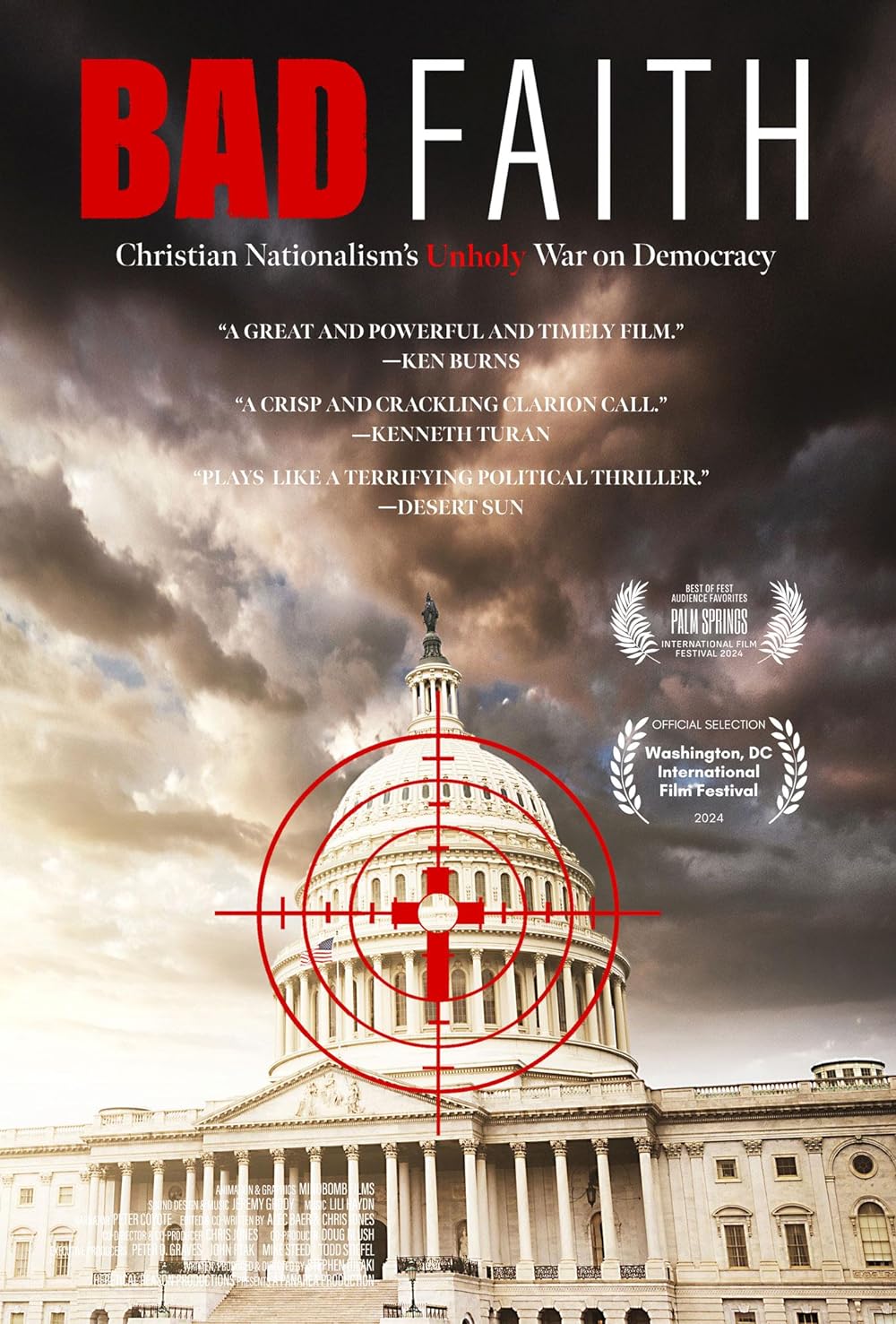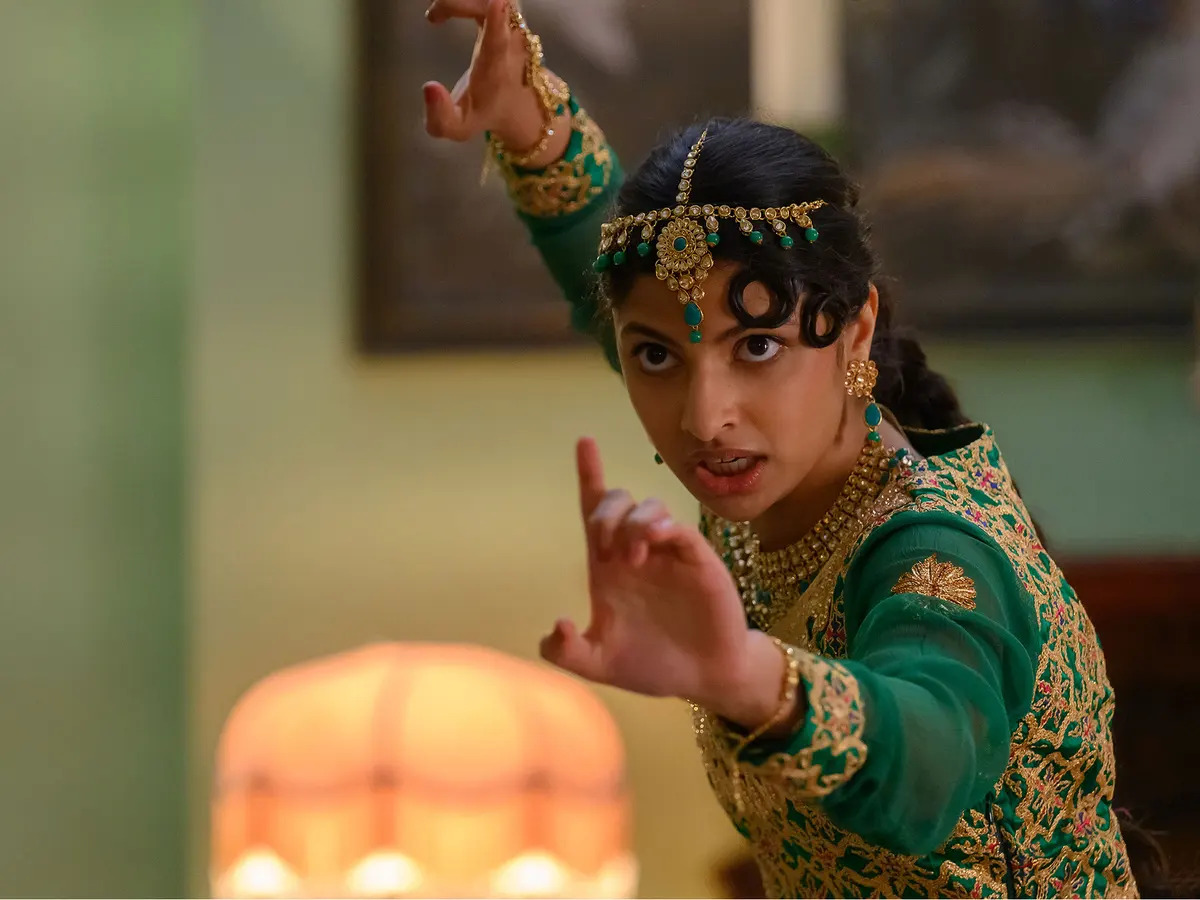Rent
Posted on November 20, 2005 at 10:45 am
When thinking about a Tony- and Pulitzer-prize winning musical based on an opera, an almost-entirely-sung story about homeless artists, some of them drug addicts, some infected with the AIDS virus, the director of Mrs. Doubtfire is not the first thought that comes to mind, but he turns out to be a wise choice.
Director Chris Columbus is not known for being edgy. But he is known for respecting the material and the performers and for bringing solid, if uninspired, journeyman skills — like attention to detail — to productions designed around reliably marketable themes (romantic comedies, heartwarming family stories) and reliably marketable big Hollywood stars (Julia Roberts and Susan Sarandon in Stepmom, Robin Williams in Mrs. Doubtfire), and for taking on the first two Harry Potter movies and not messing them up. He is safe.
That may seem like an odd choice for “Rent,” not just a critically acclaimed Broadway musical, not just an all-but perpetually-playing theatrical production around the world, but a genuine cult, with Rent-heads camping out overnight to get the limited low-price tickets set aside for each performance, people who have been to see dozens of productions. But when you consider the challenges faced by those who wanted to adapt this phenomenon for film, the choice of Columbus makes sense — and so does the result.
Adapting any play for screen is always tricky. What works on stage does not necessarily work in a movie. Plays are more about the words. But movies, where so much is communicated with the slightest motion of an eyebrow, feel weighed down and stagey if they seem too talky. Furthermore, the play “Rent” is very much an artifact of its era. Do we try to update it a decade, adding cell phones, digital video cameras, and internet access? AIDS is neither the shock nor the death sentence it was in 1989. Do we keep it as a time capsule? Its inspiration, La Boheme, still works, even though not many people die of tuberculosis anymore.
But, and I know I am risking a flood of email here, “Rent” is also an artifact of another era, the subjective era of transition into adulthood. That made it a totem for young audiences. The underlying theme is a fantasy for 15-year olds, who think it is all so simple and romantic to build your life on the principle of “epater le bourgeois” (shock the middle class).
Its starkness has a lot of appeal to the us/them tendencies of adolescents. It suggests that the only legitmate and authentic option is to live in poverty in the name of artistic integrity. And there is even more appeal in the idea of leaving your family of origin to create one of your own with your friends, a happily multi-ethnic, pan-sexual alliance of ever-merry, ever-devoted, ever-honest comrades in arms who know that all that matters is “la vie boheme.”
They sing an anthem: “To loving tension, no pension/To more than one dimension/To starving for attention/Hating convention, hating pretension/Not to mention of course/Hating dear old mom and dad/To riding your bike/Midday past the three- piece suits/To fruits to no absolutes/To Absolut/to choice/To the Village Voice/To any passing fad/To being an us-for once-, instead of a them….”
What could be more heavenly? To live in a picturesque little artistic hovel with artists who understand that art and love and fun are all that matter. At its best, it taps into the 15-year-old longings we all keep inside.
The power of the music and the characters and the live performance somehow make the weakness of those themes work, especially in the context of the show’s mythic backstory. The man who wrote it, Jonathan Larson, who was waiting tables just months before the show opened, died suddenly just after the final rehearsal, never knowing that his first play would become a sensation. But how can you translate that to film without throwing it all out of balance?
Furthermore, the conventional wisdom in Hollywood, even after the success of Chicago is that the “traditional” musical is no longer possible, that any movie with songs has to have a “device” like the stagey artificiality of Moulin Rouge or the “it’s all in her mind” approach of Chicago. Is it possible in the 21st century for us to accept the idea of a bunch of squatters dancing and singing through subways, abandoned buildings, AIDS support groups, and elegant engagement parties?
Enter the safe Christopher Columbus who has just successfully shepherded another property with fanatically protective fans, the first two Harry Potter films. And he turns out to be just the right sensibility for this material.
How can it broaden its appeal from that specific moment? The music is strong and sustainable. The characters are vivid and (mostly) endearing. The first good decision Columbus made was to keep as much of the original Broadway cast as possible. Six of the original eight leads appear. Most Hollywood films have no rehearsal time and actors often meet each other just before the scene begins. These actors worked together over a long period of time, performing the show together over a very successful run. Their complete comfort with their characters and command of the material adds immeasurably to the depth and richness of the performances. And the fact that they are not played by over-familiar Teen People cover icon pop stars (reportedly, Justin Timberlake and Christina Aguilera were considered for parts in the movie) helps us to believe in the performers as unknowns living in poverty.
The story centers around roommates Roger (Adam Pascal), an AIDS-infected songwriter still mourning the death of his girlfriend, and Mark (Anthony Rapp), a documentary film-maker and refugee from the suburbs, still mourning the loss of his girlfriend — to her new girlfriend. His former girlfriend is Maureen (Irina Menzel), an outspoken performance artist, and her new love is Joanne (Tracie Thoms), a lawyer from a wealthy family.
Roger and Mark have a former roommate, Benny (Taye Diggs), now married to a wealthy girl. He is working for his father-in-law, planning a rennovation of the neighborhood. On Christmas Eve 1989 he offers his friends free rent if they will stop Maureen’s performance art protest of the development. A downstairs neighbor named Mimi (Rosario Dawson) comes up looking for a light for her candle. And another friend, Collins (Jessie L. Martin), a renegade professor, comes by with the flamboyant but sweet-natured cross-dresser Angel (Wilson Jermaine Heredia), who rescued him after a mugging and later brings him to an AIDS support group, and then becomes his lover.
We go through a year with these characters (or, as they put it, 525,600 minutes) as they struggle with issues of health, romance, money (always needing that “rent”), and art. Will Maureen and Joanne stay together? (A highlight of the movie is a sensational angry duet in the middle of an elegant engagement party given by Joanne’s parents.) Will Roger risk loving again? Will Mark go to work for a sleazy tabloid television show (the Faustian offer is made in a funny cameo by Sarah Silverman of Jesus is Magic). Will Collins give up New York for the stark beauty of Santa Fe?
Columbus wisely begins with the cast standing on a stage singing one of the show’s key songs, acknowledging the inherent artificiality, and then he just asks us to accept that we are entering a place in New York where people just break into song all the time, and we do.
The musical numbers are capably, if not especially imaginatively staged (with the exception of Angel’s introductory number, which has some distracting editing), and the structural pruning and smoothing Columbus and screenwriter Steve Chbosky have done is judicious and unobtrusive.
The show-stoppers deliver, especially “La Vie Boheme,” with the cast dancing on a restaurant tabletop. Pascal sometimes seems to have wandered in from a 1970’s dinner theater production of Jesus Christ Superstar and Tony winner Heredia gives us more of Angel’s sweetness than his sass, but Menzel and Martin are jump-off-the-screen superstars, fiery, gutsy, and touching. Dawson and Thoms, the two additions to the cast, are both magnificent, matching the old-timers every step of the way. As they play the two outsiders to the close-knit community, their energy works well to complement the members of the original cast who play Roger, Mark, and their friends, and by the end of the movie, we feel that we, too, are a part of this family, or wish we were.
Parents should know that this movie has very strong material for a PG-13, including gay, straight, and bi-sexual characters, many of whom have AIDS and are or have been drug addicts. Characters use strong language, drink, and abuse drugs. A character is mugged and injured. A dog is killed (off-camera) and there is a very sad death. Parents who have concern about the suitability of this film for teenagers should see it before deciding whether it is appropriate, and, if they do decide to permit middle or high schoolers to see it, they should be prepared to discuss it with them afterward.
Families who see this movie should talk about the moral choices faced by Mark, Benny, Collins, and Maureen, and how they decided what their priorities and options were. How did Angel see his choices differently, and why? They should read the lyrics of “La Vie Boheme” and see how many of the references they can identify. They should also read and talk about this essay by Dave Eggars about what it means (and does not mean) to “sell out.”
Families who enjoy this movie will also enjoy Chicago and Hair. They will also enjoy seeing a live or video production of the opera that inspired this musical, Puccini’s gorgeous La Boheme (just as in “Rent,” the ailing Mimi comes upstairs to get a light for her candle). The version by Baz Lurhmann
, director of Moulin Rouge and Strictly Ballroom is very striking. Harvard Law Professor Joe Singer’s thoughtful comparison of the movie and stage versions of the show is very worthwhile and the DVD version has some fascinating (and heartbreaking) background footage.






